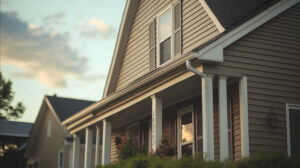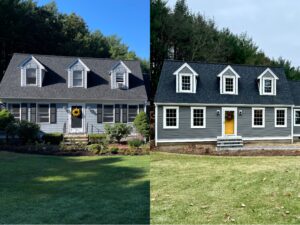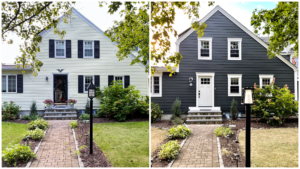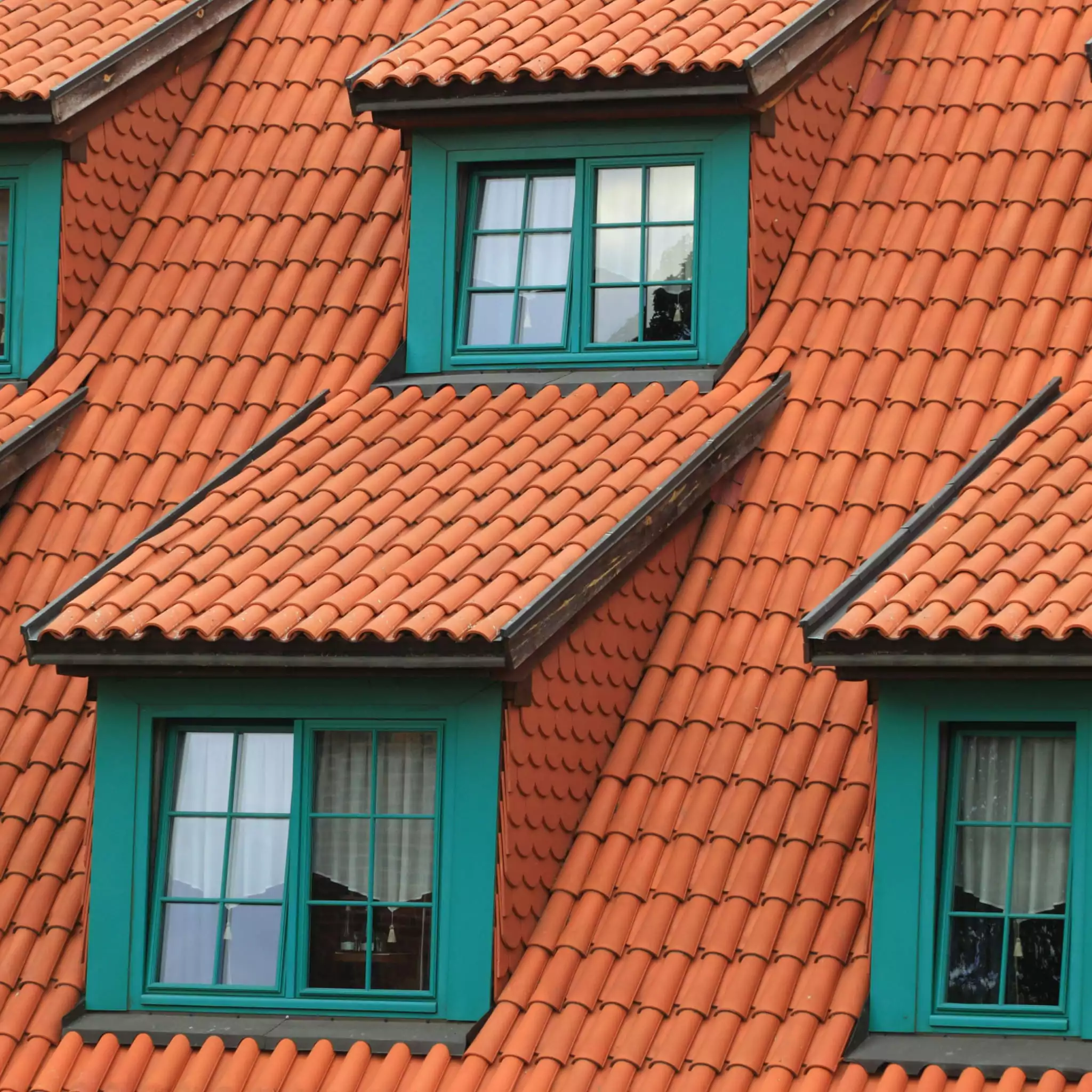

President at Plum ProExteriors
Top 6 Roofing Materials for Your Home

Your roof plays an essential part in your house’s overall aesthetic and energy efficiency. Selecting the right one can be exciting and overwhelming, with the best rated roofing materials available, each with its benefits.
Today, we’ll explore the different types of roofing materials available for your home, focusing on durability, style, and performance to perfectly suit your needs.
1. Asphalt shingles
Asphalt shingles are popular for residential roofs because they are affordable and easy to install, covering about 80% of homes in the U.S.

Advantages:
- Cost-effective: Asphalt shingles are a budget-friendly roofing option that provides good value.
- Variety: They come in many colors, textures, and styles, often mimicking wood, slate, or tile at a lower cost.
- Easy to install: Their straightforward installation helps reduce labor costs, and most roofers are experienced with them.
- Versatile: They work in various climates and can be strengthened with fiberglass or organic materials for extra durability.
Disadvantages:
- Shorter lifespan: Typically lasting 20-30 years, asphalt shingles don’t last as long as more durable roofing materials.
- Environmental concerns: As petroleum-based products, they’re not the most eco-friendly option and add to landfill waste when replaced.
- Performance issues: They can be easily damaged by extreme weather like high winds or hail, leading to more frequent repairs.
Cost: Materials cost between $5 to $7 per square foot labor and materials.
Best for: Homeowners seeking an affordable, versatile, and attractive roofing option that works in different climates.
2. Metal roofing
It is popular for its durability and sleek appearance. It’s becoming more popular for both homes and businesses.

Advantages:
- Long lifespan: Metal roofs can last 40-70 years, much longer than materials like asphalt.
- Weather protection: Metal roofing holds up well in harsh weather, offering strong defense against heavy snow, hail, and high winds.
- Energy efficiency: Metal reflects sunlight, which can lower cooling costs by 10-25%. Some metal roofs also have special coatings for extra energy savings.
- Eco-friendly: Many metal roofs use recycled materials.
- Variety in appearance: Metal roofs come in panels or shingles and offer many color and style options, including designs that resemble wood, slate, or tile.
Disadvantages:
- Noise: Metal roofs can be loud during rain or hail without good insulation, but soundproofing can help.
- Expansion and contraction: Metal changes size with temperature, which can loosen fasteners if not installed properly.
Cost: Metal roofing can range from $24 to $32 per square foot labor and materials.
Best for: Homes in areas prone to extreme weather, those looking for a long-lasting and energy-efficient roof, and eco-conscious homeowners.
3. Wood shingles and shakes
Wood roofing offers a natural, rustic charm that synthetic materials can’t easily replicate. The shingles are machine-cut for a smooth finish, while shakes are hand-split for a rougher appearance.

Advantages:
- Natural insulation: Wood helps regulate indoor temperatures and reduce energy costs with its natural insulating properties.
- Aesthetic appeal: Wood shingles and shakes give homes a warm, organic look, enhancing traditional, rustic, or historic designs.
- Eco-friendly: When sourced from sustainable forests, wood roofing is environmentally friendly, biodegradable, and can be recycled into mulch.
- Longevity: With proper maintenance, wood shingles can last 30-40 years, and wood shakes can last even longer.
Disadvantages:
- Fire risk: Wood is very flammable, though treatments can increase its fire resistance. Some areas with strict fire codes may limit its use.
- Maintenance: Wood roofs need regular upkeep, including cleaning, staining, and treatments to prevent rot, insects, and moss growth.
Cost: It costs about $25-$34 per square foot labor and materials.
Best for: Homes in dry areas, people who like a natural, rustic style, and eco-friendly homeowners who don’t mind upkeep.
4. Slate roofing
Slate is a durable and attractive roofing material option, often found on historic and luxury homes.

Advantages:
- Longevity: Slate roofs can last over 100 years, offering exceptional durability and resistance to fire, water, and wind.
- Aesthetic appeal: Slate’s natural beauty enhances any home’s appearance, with each tile offering a unique, custom look.
- Eco-friendly: Slate requires minimal processing and can be fully recycled.
- Low maintenance: Once installed, slate requires little upkeep and resists mold, mildew, and insect damage.
Disadvantages:
- Weight: Slate is heavy and usually requires reinforced roof structures, which can raise the overall cost.
- Fragility: Although durable, slate can crack under heavy impact from things like falling branches or foot traffic during maintenance.
Cost: Expect to pay between $38 to $45 per square foot labor and materials.
Best for: Luxury homes, historic properties, and anyone wanting a durable and eye-catching roof.
5. Synthetic roofing materials
Synthetic roofing looks like natural roofing materials such as slate, wood, or tile, but is more affordable and easier to maintain.

Advantages:
- Cost-effective: Synthetic materials are cheaper than natural ones but still deliver a similar look. They’re also simpler to install, which lowers labor costs.
- Durability: Engineered for strength, synthetic roofs resist weather, fire, and impact, lasting 30-50 years with minimal upkeep.
- Lightweight: These roofing materials are lighter than options like slate or clay, making them easier to use on different structures without needing extra support.
- Eco-friendly: Many synthetic roofs are made from recycled materials.
Disadvantages:
- Appearance: While they closely resemble natural materials, synthetic options might lack the same depth in color or texture, and quality can vary by brand.
- Longevity: Although durable, synthetic roofs may not last as long as natural ones, especially in harsh weather.
Cost: This can range from $36 to $43 per square foot labor and materials.
Best for: Homeowners seeking an affordable, low-maintenance roof that looks like pricier materials.
6. Rubber roofing (EPDM)
Rubber roofing, particularly EPDM, is a durable and affordable option for flat or low-slope roofs.

Advantages:
- Durability: EPDM roofing lasts 20-30 years and can handle weather, UV rays, and ozone, making it ideal for tough climates.
- Affordability: Rubber roofing is one of the most cost-effective roofing options for flat or low-slope roofs, with materials and installation costs typically lower than other types of roofing materials.
- Ease of installation: EPDM is light and easy to put on, which cuts down on labor costs. It’s also simple to repair with patch kits.
- Eco-friendly: EPDM is usually made from recycled materials and can be recycled again when replaced.
Disadvantages:
- Aesthetics: EPDM roofing is typically black and has a utilitarian appearance, which may not be as visually appealing as other best rated roofing materials.
- Maintenance: While durable, EPDM roofing may require regular maintenance to prevent leaks, particularly around seams and flashing. Susceptibility to punctures: EPDM can be prone to punctures from sharp objects or foot traffic. Special care is needed to avoid damage during and after installation.
Cost: Rubber roofing typically costs between $11 to $15 per square foot labor and materials.
Best for: Flat or low-slope roofs, commercial buildings, and homeowners looking for an affordable, low-maintenance roofing solution.
Our industry experience in roofing services
At our roofing services company, we’ve honed our expertise over years of hands-on experience, working with a diverse roof material types and projects. A commitment to quality and, most importantly, customer satisfaction has defined our journey in the roofing industry.
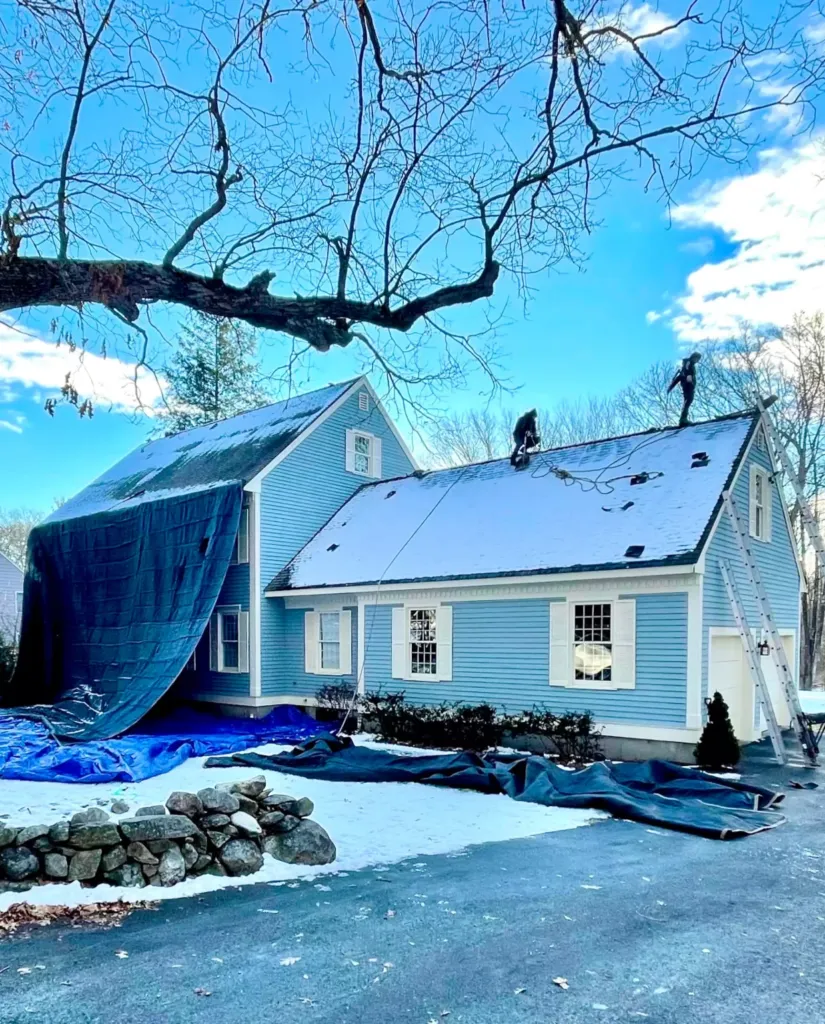
From traditional options to modern roofing materials, our team has extensive knowledge and experience installing, repairing, and maintaining all roofing systems. We understand that each roofing material offers unique advantages and challenges, and we’re well-equipped to guide homeowners through the selection process to find the best fit for their needs.
Every home has unique roofing needs. We provide custom advice based on your home’s design, location, and preferences. Whether you’re looking for a cost-effective, durable solution or a premium, long-lasting roof that enhances your home’s aesthetic appeal, we tailor our services to meet your needs.
If you’re curious about the durability of your roof and how it might impact your roofing decisions, you can contact us for more insights.
Conclusion
Roofs are a great investment for your home’s appearance and efficiency. A good roof material can enhance your home’s look and protect it better from the weather.
We can help you through the process. Contact us to find out how our reliable services can protect your home.
